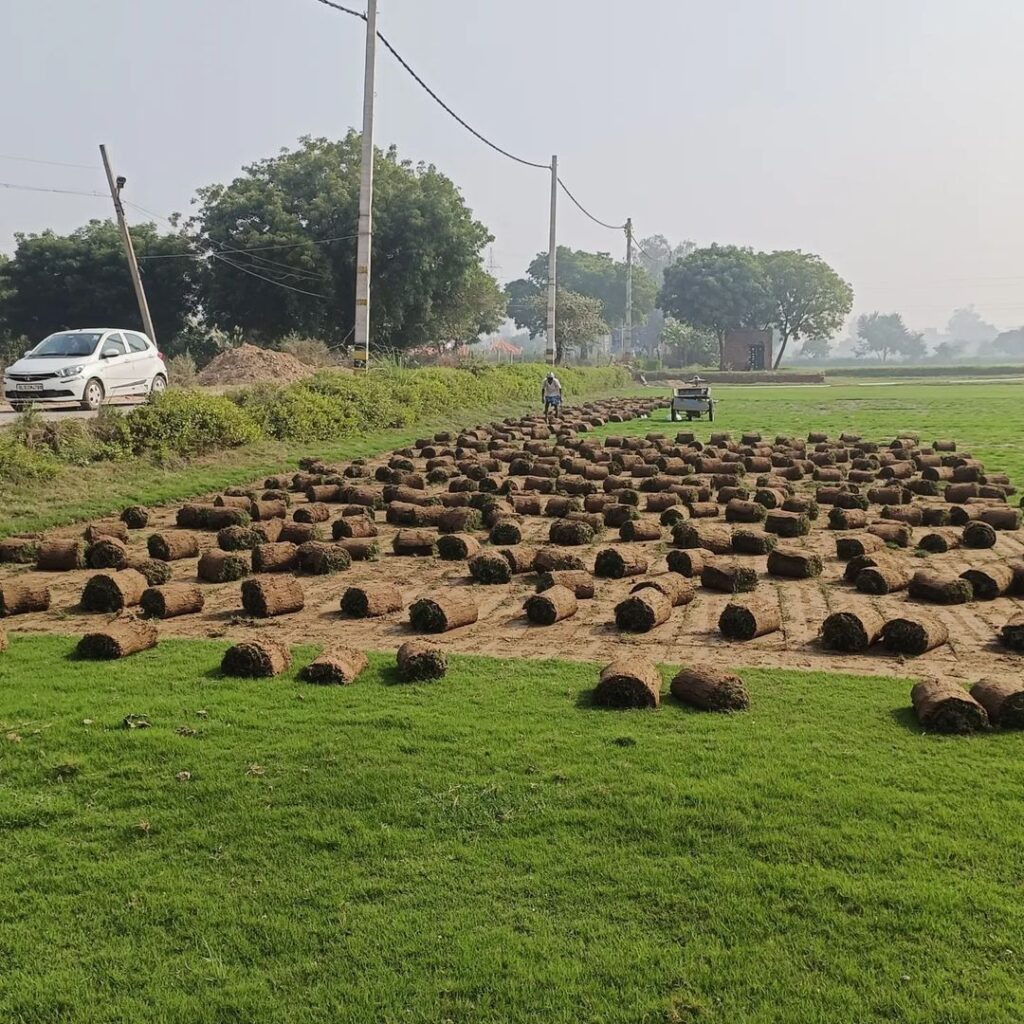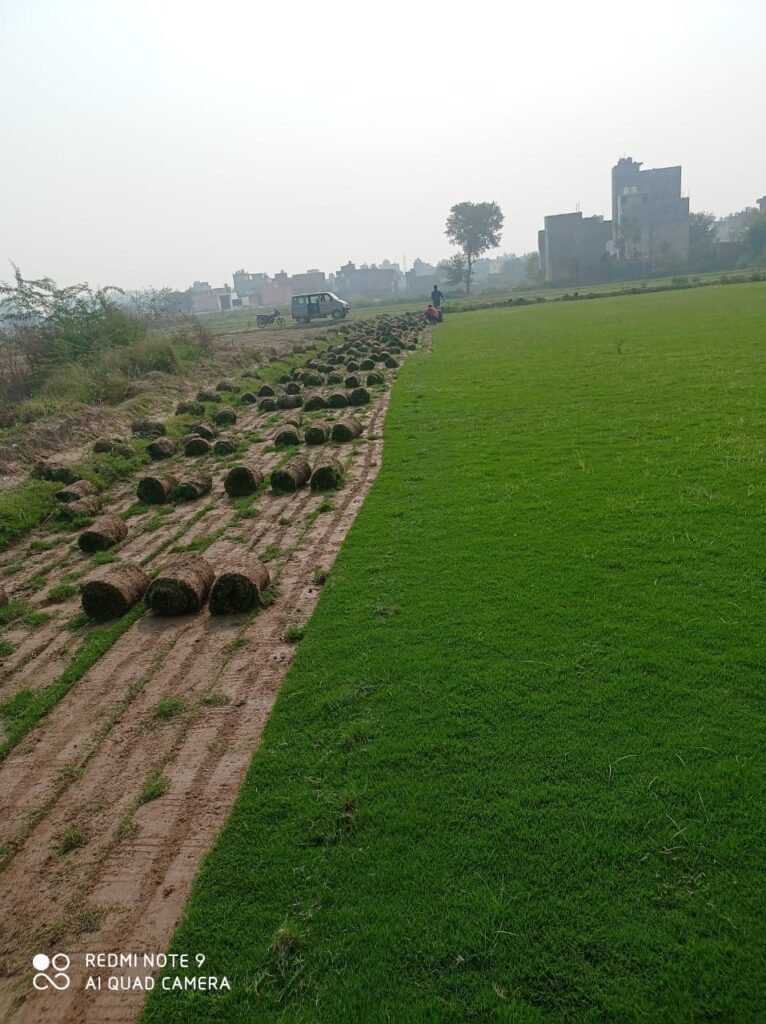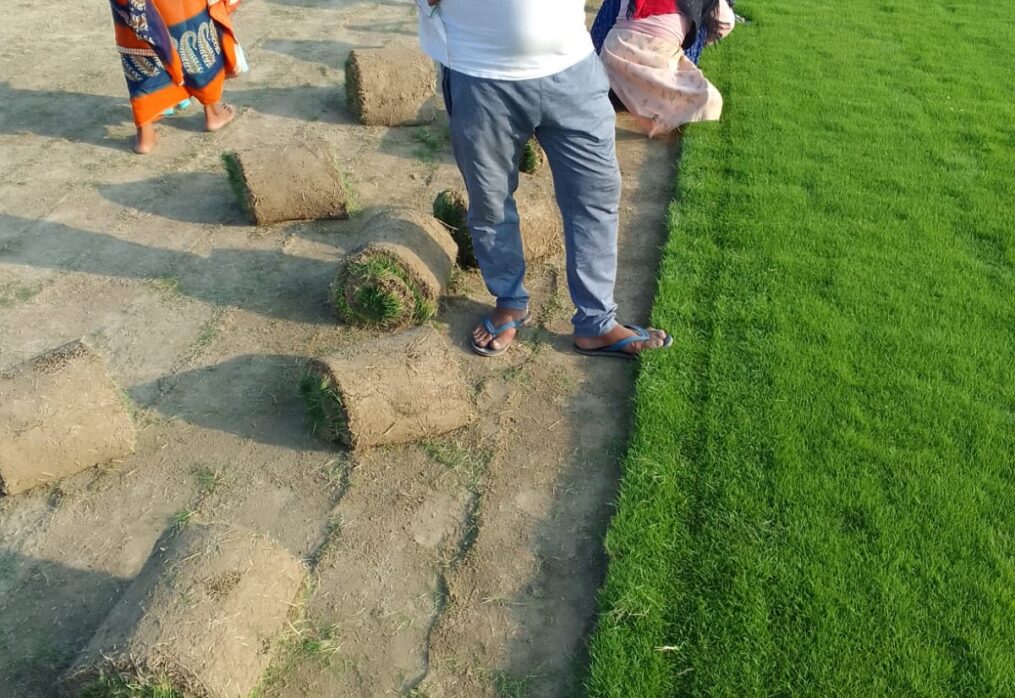Top 10 FAQs About Lawn Grass in India – Answered by Balaji Nursery
Choosing the right lawn grass for your garden isn’t just about greenery—it’s about picking what works best for your soil, climate, and lifestyle. At Balaji Nursery, we’ve helped thousands of customers across Delhi, Chandigarh, and North India transform dull spaces into lush green lawns. Whether you’re starting fresh or struggling with patchy grass, these top 10 frequently asked questions (FAQs) will help you make better, smarter lawn care decisions.
1. Which lawn grass is best for Indian weather?
India’s climate is diverse, but some grasses grow well almost everywhere:
-
Doob Grass (Cynodon dactylon): Native, hardy, and perfect for hot regions.
-
Carpet Grass: Soft, low-growing grass, ideal for semi-shaded areas.
-
Selection 1 (Bermuda Grass): Great for active lawns due to its dense and soft texture.
-
Mexican and Korean Grass: Best suited for decorative gardens with limited foot traffic.
If you’re looking for an all-rounder, Doob Grass is budget-friendly, low-maintenance, and naturally adapted to Indian soil.

2. What is the best grass for high-traffic areas like parks or playgrounds?
If kids play on your lawn or if people frequently walk across it, you need a tough and self-repairing grass:
-
Bermuda Grass (Selection 1): Very durable and quick to bounce back from wear.
-
Doob Grass: Thrives in hot, dry regions and is excellent for repeated use.
Avoid delicate varieties like Mexican Grass, which is more decorative and doesn’t recover well from heavy use.
3. When should I plant lawn grass in India?
The best time to plant natural lawn grass is when the soil is warm but not too hot, and there’s enough moisture to help roots settle:
-
Spring (Feb–April): Perfect for root development before summer kicks in.
-
Post-Monsoon (Aug–Oct): Soil is soft, moist, and full of nutrients.
Try to avoid planting in peak summer or deep winter, as extreme temperatures can stunt root growth.
4. How much water does lawn grass need in India?
Watering needs change with the seasons:
-
Summer: Every day or every alternate day—early morning is best.
-
Winter: Just twice or thrice a week is enough.
-
Rainy Season: Water only if rainfall is less or irregular.
Overwatering can lead to root rot and fungal infections. Make sure your lawn has good drainage.
 5. How often should I mow my grass?
5. How often should I mow my grass?
Mowing frequency depends on how fast your grass grows and the season:
-
Bermuda and Doob Grass: Every 7–10 days in summer, every 2 weeks in winter.
-
Carpet Grass: Once every 2 weeks.
-
Korean Grass: Needs less trimming—once a month is enough.
Quick tip: Never cut more than one-third of the blade height. And always use a sharp mower blade.
6. What’s the best way to stop weeds in my lawn naturally?
Weeds compete with your grass for nutrients and sunlight. You can prevent or reduce them by:
-
Keeping your lawn thick and healthy: This blocks sunlight from reaching weed seeds.
-
Mowing regularly: Stops weeds from flowering and spreading.
-
Using compost or mulch: Adds nutrients and prevents new weed growth.
-
Hand pulling: Still one of the best ways for small lawns.
You can also try organic herbicides, but always test in a small patch first.
7. Why is my lawn turning yellow or patchy?
Yellow spots or thinning areas are a sign that something’s wrong. Here’s what could be causing it:
-
Too much or too little water
-
Lack of nutrients (especially nitrogen)
-
Poor mowing practices
-
Fungal infections
-
Dog urine or chemical spills
We recommend getting a soil test before applying fertilizers. Use an anti-fungal spray if the problem seems related to humidity or wet soil.
8. What fertilizer should I use for lawn grass?
Balanced nutrition is key. Look for fertilizers that include:
-
Nitrogen (N): For lush, green growth
-
Phosphorus (P): Strengthens roots
-
Potassium (K): Helps fight disease and improves drought resistance
Fertilizer schedule:
-
Spring: Use NPK 20-20-20
-
Summer: Use high nitrogen for leaf growth
-
Autumn: Switch to low-nitrogen, high-phosphorus fertilizers
You can also mix in organic compost or cow dung manure for long-lasting results.
9. How do I install lawn grass rolls properly?
We offer ready-to-install natural sod rolls, and here’s how we do it right:
-
Clean and level the soil
-
Add compost and nutrients
-
Lay sod rolls tightly with no gaps
-
Water deeply immediately after installation
-
Avoid walking on the grass for at least 10–14 days
Lawn sods need about 2–3 weeks to take root fully, especially in summer.
10. Where can I buy natural grass in Delhi, NCR, and nearby areas?
You’re already in the right place. At Balaji Nursery, we offer:
-
Top-grade lawn grasses: Doob, Bermuda, Carpet, Mexican, and Korean varieties
-
Affordable rates for both small gardens and large projects
-
Installation and delivery services across Delhi, Chandigarh, Noida, Gurgaon, and beyond
-
Live support and consultation to help you choose the best type of grass for your space
We prepare and dispatch fresh sod rolls on demand—no dry roots or dead patches.
People Also Ask
What is the cost of lawn grass per square foot in India?
Prices range from ₹5.40 to ₹8.50 per sq ft, depending on the variety and whether installation is included.
Can I grow grass without soil in India?
Yes, hydroponic methods or placing sod over grow mats are options, but traditional soil planting is still the most practical and affordable.
Is artificial grass better than natural grass for home lawns?
Artificial grass may look neat, but natural grass is cooler, eco-friendly, and supports soil health—ideal for Indian homes.
Conclusion
Growing a lawn is easier when you start with the right knowledge, good-quality grass, and reliable guidance. Whether you’re going DIY or hiring professionals, a healthy lawn adds beauty, coolness, and value to your space.
Balaji Nursery is here to help you every step of the way—from selecting the right grass to professional installation and care tips. Get in touch with our team for a free consultation and price estimate.
- Grass Types that Survive Frost & Snow (Uttarakhand-Specific) - December 6, 2025
- Low-Water Grass Varieties for Hilly Homes in Uttarakhand - December 1, 2025
- Mexican Grass vs Bermuda Grass – Which is Best for Indian Lawns? - November 28, 2025
